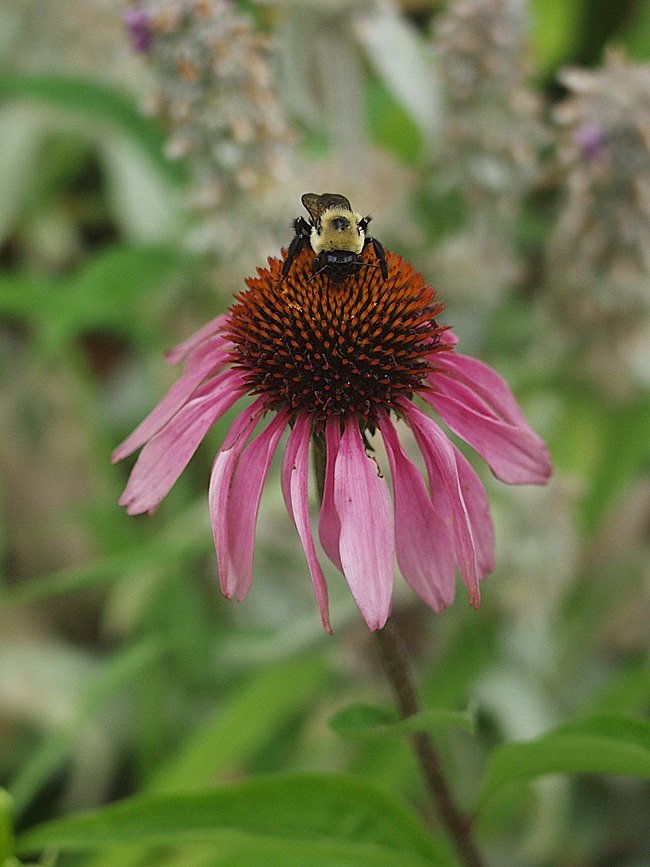
One of our most beloved wild flowers, the Purple Coneflower is at the eastern edge of its native range here; but ornamental plantings have made it a common sight, and from those ornamental plantings come seeds that reinforce the wild population. Up close, the vivid red-orange of the disk florets is as striking as the bright pink-purple of the rays. The flower heads are very attractive to bumblebees.

This is the Echinacea so much prized by herbalists for its supposed use against colds.
Gray describes the genus (which he lists as Brauneria) and the species:
BRAUNÈRIA Neck. PURPLE CONE-FLOWER. Heads many-flowered; rays mostly drooping, pistillate but sterile. Bracts of the involucre imbricated, lanceolate, spreading. Receptacle conical, the lanceolate carinate spiny-tipped chaff longer than the disk-flowers. Achenes thick, short, 4-sided; pappus a small toothed border.—Perennial herbs, with stout and nearly simple stems naked above and terminated by a single large head; leaves chiefly alternate, 3-5-nerved. Rays rather persistent; disk purplish. (Named, it is said, for Jacob Brauner, a German herbalist of the early part of the 18th century.) Echinacea Moench.
Rays purple, rose-color, or rarely white.
B. purpurea (DC.) Britton. Stem smooth, or in one form rough-bristly; leaves rough, often serrate; the lowest ovate, 5-nerved, veiny, long-petioled; the others ovate-lanceolate; involucre imbricated in 3-5 rows; rays 15-20, dull purple (rarely whitish), 2.5-4.5 cm. long or more. (Echinacea Moench.) — Prairies and banks, from w. Pa. and Va. to Mich., Ia., and southw.; reported as adventive eastw. July.
